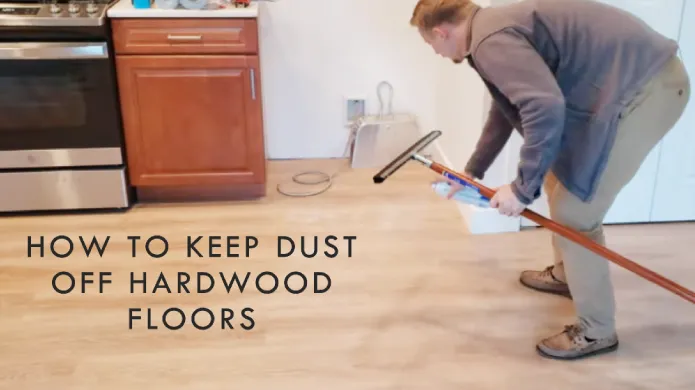How to Keep Sprinkler Valve Box Dry: 7 Methods & 6 Tips
Keeping your sprinkler valve box dry is crucial to the longevity of your system. Its importance becomes more apparent when the temperatures start to drop and winter sets in. After all, if your valve box freezes, you’ll be facing some big repair bills come spring.
A sprinkler valve box is a great way to keep your lawn and garden looking beautiful. But if you find yourself in an area with a lot of rain or snow, you may have noticed that your valve box tends to fill up with water. This can cause the valves to stick or rust, which can lead to costly repairs.
So, how to keep your valve box dry this winter? Luckily, there are a few things you can do to avoid your valve box getting dry and free from water damage. Read on to find out.
How to Keep Sprinkler Valve box Dry: Effective Methods
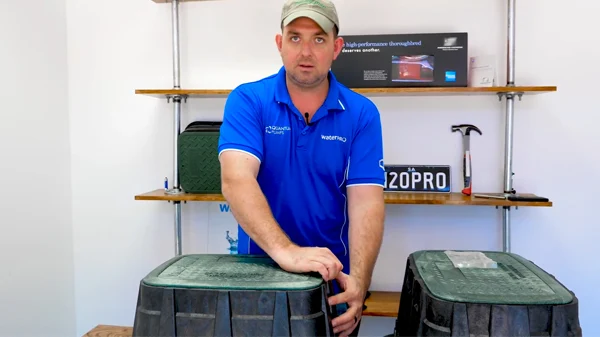
A dry sprinkler valve box is essential to the proper functioning of your sprinkler system. To avoid undue problems, keeping the sprinkler valve box dry and in good condition is important. Here are some tips on how to do that:
1. Inspect the Valve Box and Lid Regularly
The first step in keeping your valve box dry is to inspect it regularly for cracks or gaps. If you find any, seal them with a high-quality caulk or sealant. You should also check the lid to make sure that it’s properly secured. If it isn’t, water can easily get into the box when it rains or snows.
2. Use a Valve Box Cover
If you live in an area where the winters are particularly harsh, you may want to invest in a valve box cover. These covers are designed to fit snugly over the top of your valve box, keeping it dry no matter what the weather throws at it.
3. Insulate the Valve Box
Another option is to insulate the valve box itself. This will help prevent any heat from escaping, which can cause condensation and moisture buildup inside the box. You can use something as simple as styrofoam or even old towels or rags to insulate the box. Just be sure to leave enough space around the valves so that they can still be accessed if needed.
4. Be on the Lookout for the Forecast

One of the best things you can do to prevent your valve box from freezing is to monitor the forecast and take action before a cold snap hits. If you know that a hard freeze is coming, take steps to protect your valve box ahead of time so that you don’t have to worry about it later.
5. Use an Insulation Blanket:
You can purchase an insulation blanket at your local hardware store. Simply cut the blanket to size and cover the entire valve box. This will help keep the inside of the box dry and protected from damage caused by moisture.
6. Use a Drain Pipe:
Another option is to install a drain pipe on the outside of the valve box. This will allow any water that does enter the box to drain out quickly, preventing it from damaging the valves or rusting the metal components.
7. Use a Waterproof Sealant:
If you want to take things one step further, you can apply a waterproof sealant to the valve box’s exterior. This will create an additional barrier against any water that tries to enter the box. Just be sure to reapply the sealant every few months to maintain its effectiveness.
Additional Tips:
Tip #1: Check for Leaks Regularly
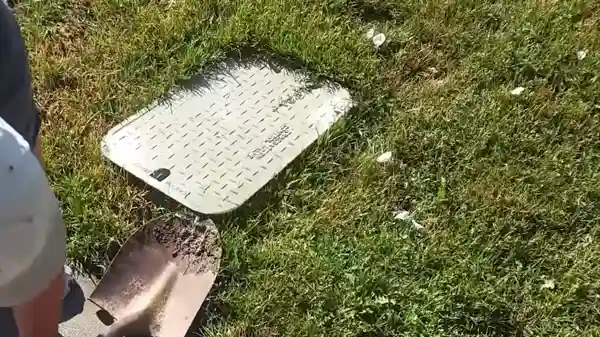
The first step to maintaining a dry sprinkler valve box is to check for leaks regularly. Even the smallest leak can cause big problems over time, so it’s important to nip them in the bud as soon as possible.
To check for leaks, open up the valve box and look for any water pooling inside. If you see any water, that’s a sure sign of a leak. Once you’ve found the leak, tighten or replace the parts as needed until the problem is fixed.
Tip #2: Invest in a Cover
When you are residing somewhere with frequent rainfall or snowfall, it’s a good idea to invest in a cover for your valve box. This will help keep water out and prevent any potential problems down the road.
Valve box covers come in all shapes and sizes, so be sure to measure your valve box before making a purchase. You want a cover that’s big enough to protect the entire box but not so big that it’s difficult to remove when you need to access the valves inside.
Tip #3: Use Sand or Gravel Around the Base
Another way to keep water out of your valve box is to surround it with sand or gravel. This will help drain any water away from the box and prevent it from seeping in through the cracks and crevices.
Tip #4: Use a Cover
Another way to protect your sprinkler valve box is to use a cover. This will protect the contents of the box from any rain or other moisture that might otherwise get in.
Tip #5: Repair Any Leaks

If you have any leaks in your sprinkler system, be sure to repair them as soon as possible. Leaks can lead to water getting into the valve box, so it is important to fix them before they cause any problems.
Tip #6: Keep an Eye on the Weather
Be sure to keep an eye on the weather forecast and avoid using your sprinkler system if there is a chance of rain or other precipitation. This will help prevent any water from getting into the valve box and causing problems.
Is it Normal for Sprinkler Valves to Leak?
The answer is that it depends on the type of valve. If you have a diaphragm valve, it is normal for a small amount of water to drip from the valve when it is turned off. This happens because the diaphragm inside the valve is still wet and needs to drain before it can completely seal the opening.
In any case, if you have a piston or globe valve, leaking is not normal and indicates that there is a problem with the valve. Piston and globe valves are designed to create a tight seal, so any leaking indicates that the seals are damaged or worn out. If your sprinkler valves are leaking, it’s best to consult a professional to diagnose the problem and determine the best course of action.
Why is My Sprinkler Valve box Filling With Water?
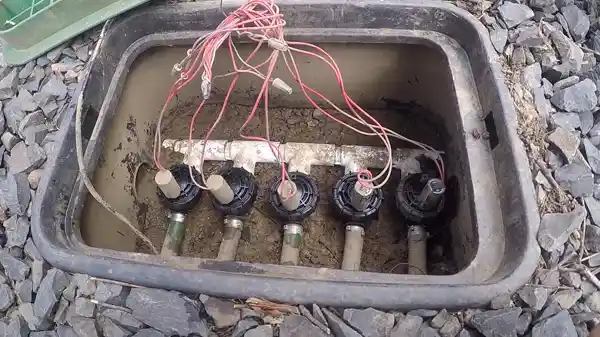
Sprinkler valve boxes are designed to protect your sprinkler system’s valves from damage. In contrast, if the box itself is filled with water, it can cause the valves to malfunction. There are a few reasons why this might happen.
- If the box is installed in an area with poor drainage, water can build up around it.
- If the lid of the box is not properly sealed, water can enter through the opening.
- If there is a crack or hole in the box, water can leak in and cause the valves to fail.
If you notice that your sprinkler valve box is filling with water, it is important to take action to prevent damage to your system.
How Do I Know if My Sprinkler System is Self-Draining?
If your sprinkler system is self-draining, it will have a backflow preventer installed on the main water line. This device allows water to flow in one direction only and prevents contaminated water from flowing back into the potable water supply.
If your system does not have a backflow preventer, it is not self-draining and may pose a health hazard. Also, self-draining sprinkler systems must be properly installed and maintained to ensure that they continue to function properly. If you are unsure whether or not your system is self-draining, you should contact a qualified irrigation contractor for assistance.
Where Should a Sprinkler Valve Box be Placed to Keep it Dry?
A sprinkler valve box should be placed in an area that is away from foot traffic, and that drains well. It is also important to make sure that the box is level so that water does not pool inside of it.
The ideal location for a sprinkler valve box is on the side of a house or garage, where it will be less likely to be disturbed. By doing this, you can help ensure that your sprinkler valve box stays dry and in good working condition.
Should Sprinkler Valves be Buried to Avoid Water Damage?

Sprinkler valves are an essential component of any irrigation system, and there are several factors to consider when deciding whether or not to bury them. One important consideration is the climate.
In regions that experience freezing temperatures, it is important to bury the valves deep enough that they will not be damaged by the cold weather. Also you should also consider the aesthetic of your landscape. If you want your sprinkler system to be hidden from view, burying the valves may be the best option.
In contrast, if you prefer a more streamlined look, surface-mounted sprinklers may be a better choice. Ultimately, there is no right or erroneous answer when it comes to determining whether to bury sprinkler valves; it simply depends on your specific needs and preferences.
Conclusion:
Sprinkler valve boxes are an important part of your irrigation system, but they can often be forgotten and neglected. Here, we’ve outlined a few tips to help you keep your sprinkler valve box dry and functioning properly.
Inspecting the box regularly for cracks and gaps, using a cover or insulating material, and keeping an eye on the forecast will go a long way towards keeping your sprinkler system in working order all winter long. If you follow these simple steps, you can avoid having to replace the entire valve box or dealing with water damage to your home.
Topics Worth Exploring:

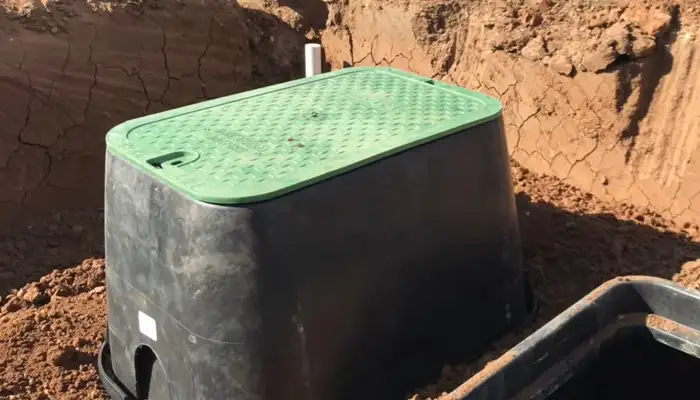


![How to Clean Syrup off Hardwood Floors: 6 Steps [DIY]](https://anyshelter.com/wp-content/uploads/2023/06/How-to-Clean-Syrup-off-Hardwood-Floors.webp)


